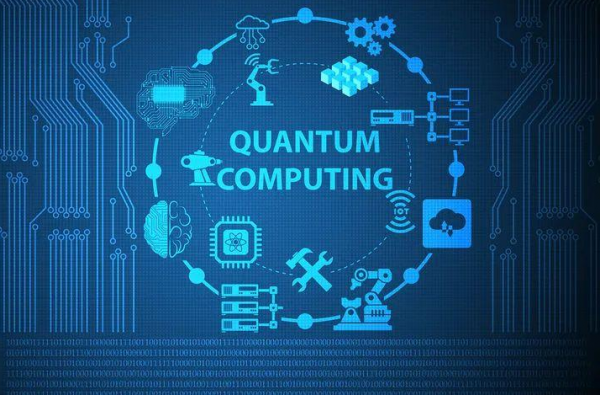科学界现在真的可以说是在屏息以待,期待着大规模量子计算机可以用于实用计算。而IBM的一个研究团队却是以完全不同的眼光来看这方面的发展:那就是在目前有限的量子资源下如何获得更多更好的结果。

By tweaking their method, the scientists successfully simulated some molecules with a higher degree of accuracy than before, with no need for more qubits. The researchers effectively managed to pack more information into the mathematical functions that were used to carry out the simulation, meaning that the outcome of the process was far more precise, and yet came at no extra computational cost.
IBM科学家们通过调整他们所用的方法,无需用更多的量子比特而成功地模拟了一些准确度比以前更高分子。IBM研究人员用了一些方法有效地将更多的信息置于用于进行模拟的数学函数里,即是说计算过程的结果要精确得多,而且并无额外的计算成本。
"We demonstrate that the properties for paradigmatic molecules such as hydrogen fluoride (HF) can be calculated with a higher degree of accuracy on today's small quantum computers," said the researchers, at the same time priding themselves on helping quantum computers "punch above their weight".
IBM的研究人员表示,“我们成功展示了利用现在的小型量子计算机可以更精确地计算出诸如氟化氢(HF)等典范分子的特性。”他们同时也为自己能帮助量子计算机“在高一个重量级别上打出这一拳”而自豪。
Car manufacturer Daimler, a long-term quantum research partner of IBM's, has shown a strong interest in the results, which could go a long way in developing higher-performing, longer-lasting and less expensive batteries.
IBM的长期量子研究合作伙伴汽车制造商戴姆勒对该成果表现出浓厚的兴趣,成果对开发性能更高、寿命更长、成本更低的电池可提供很大的帮助。
Since 2015, Daimler has been working on upgrading lithium-ion batteries to lithium-sulfur ones – a non-toxic and easily available material that would increase the capacity and speed-of-charging of electric vehicles.
戴姆勒自2015年以来一直在在做将锂离子电池升级为锂硫电池的工作,锂硫是一种无毒且比较容易获得的材料,可以提高电动汽车的容量和充电速度。
Designing a battery based on new materials requires an exact understanding of which compounds should come together and how. The process involves accurately describing all the characteristics of all the molecules that make up the compound, as well as the particles that make up these molecules, to simulate how the compound will react in many different environments. In other words, it is an incredibly data-heavy job, with infinite molecular combinations to test before the right one is found.
要设计基于新材料的电池就需要准确地了解需要将哪些化合物结合在一起以及如何结合。这个过程涉及到准确地描述构成化合物的所有分子特性以及构成这些分子的粒子,只有这样才能模拟化合物在许多不同环境中的反应。换句话说,这项工作的数据量非常大,要找到正确的分子组合就需要测试大量的分子组合。
The classical methods that exist today fail to render these simulations with the precision that is required for a breakthrough such as the one Daimler is working towards. "This is a big problem to develop next-generation batteries," Heike Riel, IBM Research quantum lead, told ZDNet. "Classical computers, and the models we've developed in physics and chemistry for many years still cannot solve those problems."
而利用目前的经典方法做的模拟无法达到戴姆勒想实现的突破所需的精度。IBM 研究院量子领头人Heike Riel告诉记者,“这是开发下一代电池面临的一个大问题。经典计算机以及我们多年来在物理学和化学领域开发的模型仍然无法解决这些问题。”
But the task could be performed at speed by quantum computers. Qubits, and their ability to encode different information at the same time, enable quantum algorithms to run several calculations at once – and are expected, one day, to enable quantum computers to tackle problems that are seemingly impossible, in a matter of minutes.
但该任务可以利用量子计算机快速完成。量子比特(Qubit)具有同时编码不同信息的能力,相应的量子算法也就能够同时运行多个计算,预计有那么一天,量子计算机能够在几分钟内解决现在看似不可能解决的问题。
To do that, physicists need quantum computers that support many qubits; but scaling qubits is no piece of cake. Most quantum computers, including IBM's, work with less than 100 qubits, which is nowhere near enough to simulate the complex molecules that are needed for breakthroughs such as lithium-sulfur car batteries.
要做到这一点,物理学家需要一些能够支持许多量子比特的量子计算机;但增加量子比特不是件那么容易的事。包括IBM量子计算机在内的大多数量子计算机的量子比特数都小于100,远远不足以模拟诸如锂硫汽车电池等突破性研究所需的复杂分子。
Some of the properties of these molecules are typically represented in computer experiments with a mathematical function called a Hamiltonian, which represents particles' spatial functions, also called orbitals. In other words, the larger the molecule, the larger the orbital, and the more qubits and quantum operations will be needed.
这些分子的一些特性通常在计算机实验里用汉密尔顿数学函数表示,汉密尔顿函数表示粒子的空间函数,又名轨道。换句话说,分子越大轨道就越大,因此需要的量子比特和量子运算就越多。
"We currently can't represent enough orbitals in our simulations on quantum hardware to correlate the electrons found in complex molecules in the real world," said IBM's team.
IBM团队表示,“我们目前还没有办法在量子硬件的模拟里表达出足够的轨道,因而模拟出来的复杂分子的电子与现实世界中的电子之间的相关性也就不够强。”
Instead of waiting for a larger quantum computer that could take in weighty calculations, the researchers decided to see what they could do with the technology as it stands. To compensate for resource limitations, the team created a so-called "transcorrelated" Hamiltonian – one that was transformed to contain additional information about the behavior of electrons in a particular molecule.
IBM的研究人员不想坐在那里等待一台更大的量子计算机来进行重量级计算,所以就决定看看用现有的技术能做些什么。IBM团队为了弥补资源的限制创造了一种所谓的 "超相关 "汉密尔顿函数,超相关汉密尔顿函数是一种包含了关于特定分子的电子行为额外信息的转换。
This information, which concerns the propensity of negatively charged electrons to repel each other, cannot usually fit on existing quantum computers, because it requires too much extra computation. By incorporating the behavior of electrons directly into a Hamiltonian, the researchers therefore increased the accuracy of the simulation, yet didn't create the need for more qubits.
额外的信息涉及到那些带负电荷电子相互排斥的倾向,现有的量子计算机通常还不能处理这种信息,因为需要太多的额外计算。IBM的研究人员将有关的电子行为直接置于汉密尔顿函数里,因此提高了模拟的准确性,但却又没有产生对量子比特更多的需求。
The method is a new step towards calculating materials' properties with accuracy on a quantum computer, despite the limited resources available to date. "The more orbitals you can simulate, the closer you can get to reproducing the results of an actual experiment," said the scientists. "Better modelling and simulations will ultimately result in the prediction of new materials with specific properties of interest."
这个方法对于在目前量子比特资源有限的情况下利用量子计算机精确计算材料特性来说是个新的起步。IBM科学家们表示,“能模拟的轨道越多,离重现实际实验结果就越近。只有建立更好的模型以及能够更好的进行模拟才能最终得到能够预测出具有特定属性的对我们有用的新材料。”
IBM's findings might accelerate the timeline of events for quantum applications, therefore, with new use cases emerging even while quantum computers work with few qubits. According to the researchers, companies like Daimler are already keen to find out more about the breakthrough.
IBM的发现有可能加速量子应用的大事时间表,因此,即便现在的量子计算机只有少少的几个量子比特,新的用例也会不断出现。据IBM研究人员说,诸如戴姆勒一类的公司都很想更多地了解这个突破。
This is unlikely to shift IBM's focus on expanding the scale of its quantum computer. The company recently unveiled a roadmap to a million-qubit system, and said that it expects a fault-tolerant quantum computer to be an achievable goal for the next ten years. According to Riel, quantum simulation is likely to be one of the first applications of the technology to witness real-world impacts.
尽管如此,IBM聚焦扩大量子计算机规模却也不会转变。IBM最近就公布了一个百万量子比特系统的路线图并表示,预计容错的量子计算机在未来十年里是个可以实现的目标。根据Riel的说法,量子模拟很可能是量子计算技术对现实世界产生影响的应用之一。
"The car batteries are a good example of this," she said. "Soon, the number of qubits will be enough to generate valuable insights with which you can develop new materials. We'll see quantum advantage soon in the area of quantum simulation and new materials."
她表示,“汽车电池是个很好的例子。量子比特的数目很快就足以产生有价值的见解,这种见解可以用于开发新材料。我们很快就会在量子模拟和新材料领域看到量子计算的优势。”
IBM's roadmap announces that the company will reach 1,000 qubits in 2023, which could mark the start of early value creation in pharmaceuticals and chemicals, thanks to the simulation of small molecules.
IBM的路线图宣布,IBM将在2023年达到1000量子比特的目标。届时,由于可以模拟小小的分子,1000量子比特可能就标志着医药和化工领域的早期价值创造开始了。








